Table of Contents
Are you tired of dealing with stubborn carpet stains? From food spills to pet accidents, carpet stains can be a hassle to clean.
We explore common types of carpet stains you may encounter, such as food and beverage stains, pet stains, dirt and mud stains, and ink stains.
We discuss household products you can use to tackle these stains, including baking soda, vinegar, dish soap, and hydrogen peroxide. We also look at specialised carpet stain removers like enzyme cleaners, oxygenated cleaners, and dry cleaning solvents.
Dive into professional carpet cleaning services such as steam cleaning, dry cleaning, and shampooing, as well as precautions and tips for effectively removing carpet stains.
If you’re looking for effective solutions to keep your carpets looking clean and fresh, this article is a must-read.
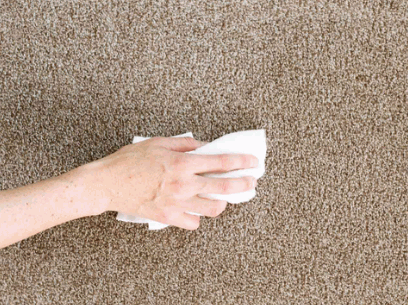
Common Types Of Carpet Stains
Carpet stains come in various forms, from annoying pet accidents to stubborn red wine spills and coffee marks. Old stains can be particularly challenging to remove, especially blood and ink stains that have been set into the fibres.
Blood stains on carpets are often the result of small cuts or injuries and can be quite stubborn. To tackle blood stains, start by blotting the area with cold water and mild soap. Avoid using hot water as it can set the stain further.
Ink stains, on the other hand, can happen from accidental pen marks or spills and require immediate attention. Try using rubbing alcohol or a mixture of vinegar and water for effective removal.
Food And Beverage Stains
Food and drink stains on carpets can be a common occurrence, requiring immediate attention. To tackle these stains effectively, dab the area with a white cloth and apply a cleaning solution made of vinegar and washing-up liquid.
Some stains may be stubborn and require additional steps for complete removal. In such cases, you can create a paste using bicarbonate of soda and water, gently rub it onto the stain, and let it sit for a few hours before vacuuming it up. For tougher stains like wine or coffee, a mixture of hydrogen peroxide and mild detergent can be used to break down the pigments. It’s important to test any cleaning solution on a hidden area of the carpet first to ensure it doesn’t cause damage.
Explore in-depth: How To Clean Carpet Mould
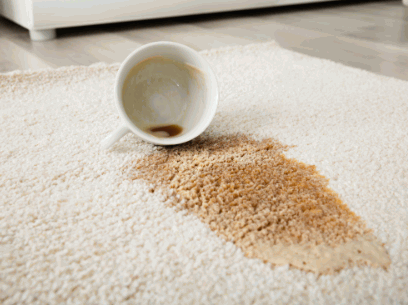
Pet Stains
Pet stains on carpets can be tough to eliminate due to their strong odours and deep penetration into the fibres. Using an enzyme cleaner or spray specifically designed for pet stains can effectively break down the organic matter and neutralise the odor.
One of the challenges faced when dealing with pet stains is ensuring that the cleaning product reaches the source of the stain deep within the carpet fibers. Enzyme-based cleaners contain active ingredients that target and digest the proteins present in urine or feces, making them a powerful solution for stubborn stains. To tackle the odor effectively, ensure that the cleaner is left on the affected area for sufficient time to allow the enzymes to work their magic.
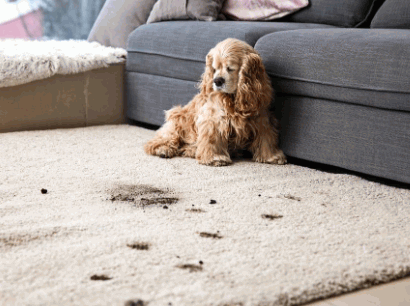
Dirt And Mud Stains
Dirt and mud stains on carpets are a common problem, especially in high-traffic areas. Professional cleaning services can help deep clean and remove embedded dirt stains, while regular vacuuming can prevent dirt build-up.
Considering the challenges of dealing with such persistent stains, it’s essential to address them promptly to avoid long-term damage to your carpet’s fibres. If left untreated, dirt and mud stains can lead to unpleasant odours and the growth of mould and bacteria, creating potential health hazards. By relying on expert cleaning services, you ensure a thorough and effective removal process that goes beyond surface cleaning, leaving your carpets fresh and revitalised.
For ongoing maintenance, it’s advisable to promptly tackle any new stains with appropriate cleaning solutions and techniques suitable for your carpet type. Implementing preventive measures such as using doormats and removing shoes before entering the house can significantly minimise the amount of dirt and mud brought indoors.

Ink Stains
Ink stains on carpets can be particularly stubborn and require immediate attention to prevent permanent damage. Using a specialised cleaning solution recommended by professionals who can help effectively remove ink stains without causing further harm to the carpet fibres.
When dealing with ink stains, it’s crucial to act quickly to avoid the ink setting into the carpet fibres. Blot the stain with a clean white cloth to soak up as much ink as possible without spreading it further. Then, prepare a cleaning solution by mixing one teaspoon of washing-up liquid with a cup of warm water. Apply the solution to the ink stain using a clean cloth, working from the outside towards the centre to prevent the stain from spreading.
If the stain persists, consider using a specialty ink remover like Rug Doctor Professional Ink Stain Remover. Follow the manufacturer’s instructions carefully to ensure effective removal without damaging the carpet. After treating the stain, blot the area with a clean cloth to absorb excess moisture and residue.
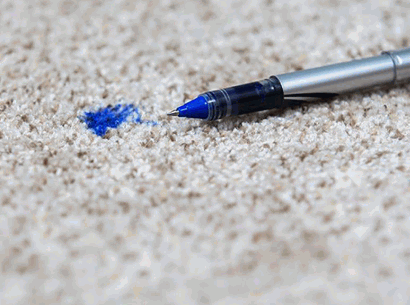
Household Products For Cleaning Carpet Stains
Bi-carb soda, white vinegar, washing-up liquid, and hydrogen peroxide can be effective in tackling various carpet stains. These readily available items offer natural and affordable solutions for stain removal.
- For instance, bi-carb soda is a versatile ingredient that can absorb and neutralise odours, making it perfect for freshening up musty-smelling carpets. Sprinkle bi-carb soda liberally over the stained area, let it sit for a few hours, then vacuum it up. The gentle abrasive properties of bi-carb soda also help lift stains.
- Regarding tougher stains, white vinegar mixed with water in a 1:1 ratio can be sprayed directly onto the stain. Blot the area with a clean cloth, and the acidity of white vinegar helps break down the stain particles.
- Washing-up liquid mixed with warm water can effectively remove grease stains. Apply the solution to the stained area, let it sit for a few minutes, then blot with a damp cloth. Rinse with clean water and repeat if necessary.
- Hydrogen peroxide is excellent for removing organic stains like blood or pet urine. Mix hydrogen peroxide with a few drops of washing-up liquid, apply to the stain, and gently blot with a clean cloth. Be sure to test in an inconspicuous area first to check for colour fastness.
Baking Soda
Bicarbonate of soda is a versatile and eco-friendly solution for carpet stains, known for its absorbent properties. Sprinkle bicarbonate of soda over the stained area, let it sit, then vacuum it up to absorb the stain effectively.
One of the greatest benefits of using bicarbonate of soda for carpet stain removal is its ability to naturally absorb odors and moisture, leaving your carpet refreshed and clean. Additionally, bicarbonate of soda is safe to use around pets and children, making it a family-friendly option for tackling pesky stains.
- To ensure maximum absorption, make sure to gently work the bicarbonate of soda into the carpet fibers using a soft brush or cloth. Let it sit for at least 30 minutes, allowing it time to absorb and lift the stain from the carpet.
For tougher or persistent stains, consider contacting professionals who specialise in carpet cleaning. They have the expertise and advanced equipment to effectively remove even the most challenging stains, ensuring your carpet looks and feels like new.
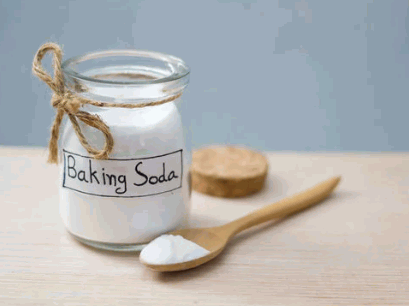
Vinegar
Vinegar is a natural and versatile cleaner that can effectively remove stains and neutralise odours from carpets. When mixed with an enzyme solution, vinegar becomes a powerful cleaning agent for breaking down tough stains.
One of the key properties of vinegar in carpet cleaning is its acidic nature, which helps to break down and dissolve various types of stains such as pet accidents, food spills, and mud tracks. Vinegar acts as a deodoriser, eliminating unwanted odours and leaving carpets smelling fresh.
To prepare a vinegar-based cleaning solution, mix equal parts of white vinegar and water in a spray bottle. For tougher stains, consider adding a few drops of washing-up liquid for enhanced cleaning power. Enzyme treatments, which contain natural enzymes that digest organic matter, are highly effective for dealing with stubborn stains like blood or urine. When combined with vinegar, these treatments can provide a double-action approach to stain removal, ensuring that carpets are thoroughly cleaned and refreshed.
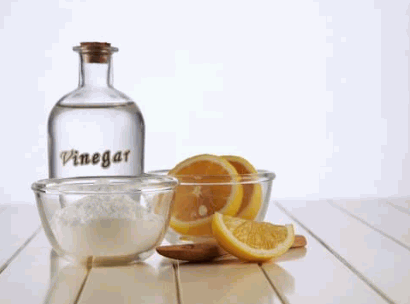
Dish Soap
Dish soap is a gentle yet effective solution for treating carpet stains, particularly greasy or oily residues. When combined with enzyme technology or treatments, dish soap can break down stains and lift them from carpet fibers for easy removal.
One of the key benefits of using dish soap for carpet stain removal is its versatility. Not only does it work well on tough, greasy stains, but it also helps maintain the integrity of your carpet fibers. By incorporating dish soap with enzyme treatments, you can enhance the cleaning process even further.
When using dish soap on carpet stains, it is essential to dilute it properly to avoid any residue build-up. Start by mixing a few drops of dish soap with warm water in a spray bottle or bucket to create a solution. Be cautious not to oversaturate the carpet as excessive moisture can lead to mold or mildew growth.
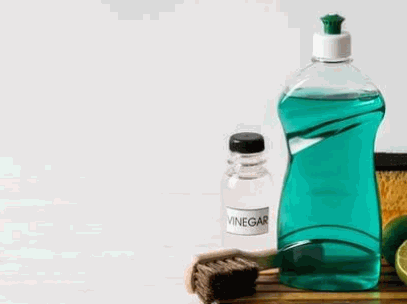
Hydrogen Peroxide
Hydrogen peroxide is a powerful oxidising agent that can help lift tough stains from carpets. When used in combination with an enzyme carpet cleaner or treatment, hydrogen peroxide can break down stains and sanitise the carpet fibres effectively.
Hydrogen peroxide’s bleaching properties can help to remove stubborn stains like coffee spills, pet accidents, or even wine stains with ease. It works by releasing oxygen when applied to the stain, which helps to break down the organic compounds that make up the stain.
It’s crucial to spot test on a small, inconspicuous area of the carpet first to ensure it won’t cause any discolouration or damage. When using hydrogen peroxide, always wear gloves to protect your skin, and ensure the room is well-ventilated to avoid inhaling any fumes.
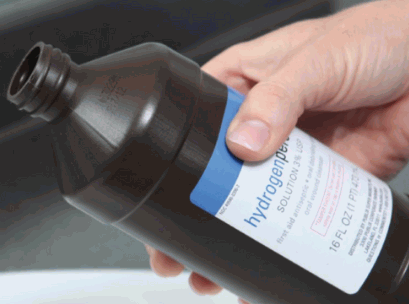
Specialised Carpet Stain Removers
Specialised carpet stain removers offer targeted solutions for various types of stains, including enzyme cleaners for organic stains, oxygenated cleaners for deep cleaning, and dry cleaning solvents for delicate fibres.
Enzyme cleaners are highly effective in breaking down protein-based stains like blood, pet accidents, and food spills by targeting the organic matter at a molecular level, leaving no residue or odours behind.
Oxygenated cleaners, on the other hand, are excellent for removing deep-set dirt, grease, and tough stains, as they release oxygen bubbles that lift the stains to the surface for easy removal, without damaging the carpet fibres.
Dry cleaning solvents are gentle on delicate fabrics, ensuring thorough stain removal without causing any colour fading or texture damage.
Enzyme Cleaners
Enzyme cleaners are bio-based solutions that target organic stains by breaking down proteins and other organic matter.
This breakdown process involves the enzymes in the cleaner specifically targeting the chemical bonds in the stains, thereby allowing for easy removal of the stubborn marks. Enzyme technology mimics the natural biological processes, making them efficient in tackling tough stains. These cleaners are eco-friendly as they harness the power of natural enzymes, ensuring they are safe for both the environment and household use. People often praise enzyme cleaners for their ability to penetrate deep into surfaces and fabrics to eliminate stains at their source, rather than just masking them.

Oxygenated Cleaners
Oxygenated cleaners use the power of oxygen bubbles to lift stains and dirt from carpet fibres effectively. Brands like OxiClean offer oxygenated cleaning solutions that can penetrate deep into the carpet pile for thorough stain removal.
Oxygenated cleaners are highly sought after due to their eco-friendly nature and powerful cleaning capabilities. These cleaners work by breaking down stains at a molecular level, making them much easier to remove. Along with OxiClean, other popular brands such as Clorox and Seventh Generation also offer a range of oxygenated cleaning products for various surfaces.
For stubborn stains that require professional intervention, companies provide specialised services using advanced cleaning techniques to ensure complete stain removal. These services are particularly beneficial for tough stains on carpets, upholstery, and rugs that regular cleaning products may not effectively tackle.
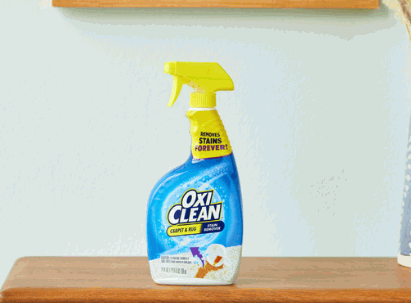
Dry Cleaning Solvents
Dry cleaning solvents are ideal for delicate carpets that cannot withstand wet cleaning methods. Products like Resolve and Arm & Hammer offer dry cleaning solutions that effectively lift stains without saturating the carpet fibres.
One of the key benefits of using dry cleaning solvents is that they provide efficient stain removal without the risk of over-wetting or damaging sensitive carpet materials. These solvents are gentle yet powerful, making them perfect for maintaining the integrity and longevity of your carpets. Popular brands like Resolve and Arm & Hammer are trusted names in the market, known for their effective formulations that target tough stains while being safe for delicate fibres.
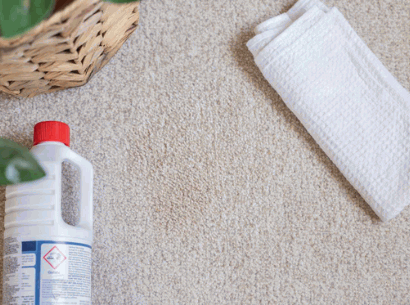
Professional Carpet Cleaning Services
Professional carpet cleaning services offer advanced solutions for deep cleaning and stain removal. Options like steam cleaning, dry cleaning, and shampooing can rejuvenate carpets and restore their original appearance.
- Steam cleaning, also known as hot water extraction, involves injecting hot water and cleaning solution into the carpet fibres and then extracting it along with dirt and grime. This method is highly effective in removing allergens and deep-seated stains, leaving the carpet sanitised and fresh.
- On the other hand, dry cleaning uses minimal moisture and specialised cleaning agents to lift dirt from the carpet without excessive water use. It is a quicker method that allows for faster drying times, making it ideal for busy households.
Professional cleaning services offer a combination of these methods to ensure thorough cleaning and maintenance of carpets, extending their lifespan and enhancing indoor air quality.
Steam Cleaning
Steam cleaning is a popular method for deep cleaning carpets and removing embedded dirt and stains. Professional services utilise specialised solutions and equipment to apply steam and extract debris effectively.
During the process of steam cleaning, hot water vapour is applied to the carpet fibres, reaching deep down to loosen dirt and grime that regular vacuuming can’t remove. The high temperature of the steam also helps to kill bacteria and allergens, making it an excellent choice for maintaining a healthy indoor environment.
One of the key benefits of steam cleaning is that it is a chemical-free and eco-friendly method of cleaning, making it safe for pets and children. Steam cleaning can help prolong the life of your carpets by keeping them in good condition and preventing the accumulation of dirt and debris.
Whilst DIY steam cleaning machines are available for hire, it’s often recommended to seek professional assistance from reputable companies to ensure thorough cleaning and optimal results. Professional cleaners have the expertise and equipment to tackle tough stains and ensure that your carpets are left looking fresh and rejuvenated.

Dry Cleaning
Dry cleaning is a gentle yet effective method for treating delicate carpets and removing surface stains. Specialised mixtures and techniques used by professional services ensure thorough cleaning without excess moisture.
One of the key benefits of dry cleaning for carpets is the ability to tackle tough stains that traditional cleaning methods may struggle with. The process avoids saturating the carpet, thereby reducing the risk of mould or mildew growth. Dry cleaning helps to maintain the integrity of the carpet fibres, preventing shrinkage or colour bleeding.
To effectively remove stains at home, consider using a mixture of white vinegar and water or sprinkling bicarbonate of soda over the stain before vacuuming. For those seeking professional assistance, trusted services offer tailored solutions to ensure safe and efficient carpet maintenance, prolonging the lifespan of your beloved carpets.
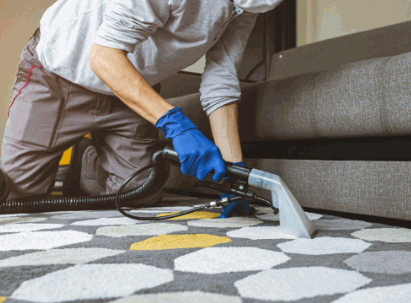
Shampooing
Shampooing is a traditional method for carpet cleaning that involves applying a cleaning solution, agitating the fibres, and vacuuming up the residue. Professional services utilise advanced equipment and techniques for thorough shampooing.
Regarding shampooing carpets, the process starts with pre-treating stains and high-traffic areas before applying the shampoo. The cleaning solution is then evenly spread over the carpet, allowing it to penetrate deep into the fibres for the effective dirt removal. White towels play a crucial role in blotting and absorbing excess moisture post-shampooing, ensuring the carpet dries properly. Once the shampooing is complete, a powerful vacuum is used to extract the dirt, grime, and cleaning solution residue, leaving the carpet fresh and clean. For optimal results and to extend the lifespan of your carpet, enlisting the help of professional cleaning companies is highly recommended.
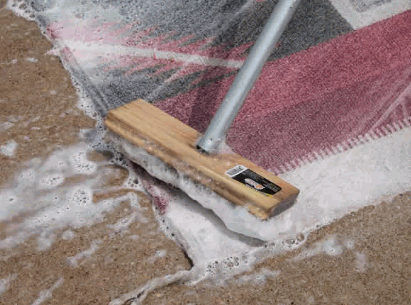
Precautions And Tips For Removing Carpet Stains
When removing carpet stains, it’s essential to take precautions to prevent damage to the carpet fibres. Avoid using harsh chemicals like bleach and opt for gentler solutions such as vinegar or isopropyl alcohol for safe and effective stain removal.
Always test any cleaning agent on a small inconspicuous area of the carpet first to ensure it doesn’t cause discolouration or damage. When dealing with oil-based stains, sprinkle bicarbonate of soda or cornflour on the affected area to absorb excess oil before cleaning. For red wine stains, blot the spill with a clean cloth and then apply a mixture of washing-up liquid and hydrogen peroxide for best results.
